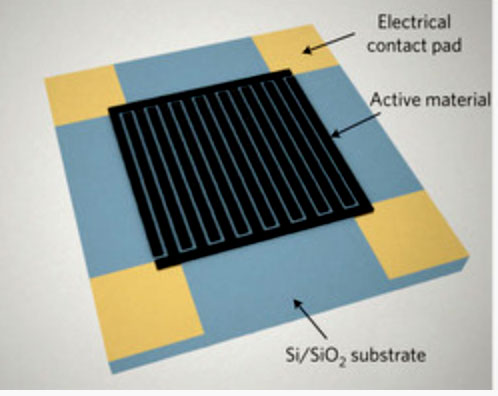Group of researchers from Drexel Nanotechnology Institute in cooperation with their collegues from France created a new technique for integrating high performance micro-sized supercapacitors into a variety of portable electronic devices through common microfabrication techniques

Group of researchers from Drexel Nanotechnology Institute in cooperation with their collegues from France described an unique new technique for integrating high performance micro-sized supercapacitors into a variety of portable electronic devices through common microfabrication techniques. By offering fast charging and discharging rates, and the ability to sustain millions of cycles, electrochemical capacitors bridge the gap between batteries, which offer high energy densities but are slow, and conventional electrolytic capacitors, which are fast but have low energy densities.
By etching supercapacitor electrodes into conductive titanium carbide substrates, they created micro-supercapacitors featuring an energy storage density that was at least double that of the best supercapacitors now available.
The next step of the work is to scale down the size of the electrodes and improve the dry etching procedure for removing metal atoms from metal carbides to make the process even more compatible with commercial microfabrication technology.
David Pech, Magali Brunet, Hugo Durou, Peihua Huang, Vadym Mochalin, Yury Gogotsi, Pierre-Louis Taberna, Patrice Simon, Ultrahigh-power micrometre-sized supercapacitors based on onion-like carbon
// Nature Nanotechnology, Volume:5,Pages:651–654,Year published: (2010),DOI:doi:10.1038/nnano.2010.162
John Chmiola, Celine Largeot, Yury Gogotsi, Pierre-Louis Taberna, Patrice Simon, Monolithic Carbide-Derived Carbon Films for Micro-Supercapacitors // Science, Vol. 328. no. 5977, pp. 480 - 483, Year published:(2010),DOI: 10.1126/science.1184126
www.drexel.edu
Nanotechnologies